The apparatus which is missing in the above question (3) to perform the experiment is
a. Glass marble
b. Digital stop clock
c. Thermocol ball
a and b
c only
b only
a, b and c
The correct Answer is:A
Topper's Solved these Questions
- MOTIONBOOK - VGS PUBLICATION-BRILLIANTCHAPTER - MOTIONEXERCISE - OBJECTIVE TYPE QUESTIONS
13 Videos
- MOTIONBOOK - VGS PUBLICATION-BRILLIANTCHAPTER - MOTIONEXERCISE - ESSENTIAL MATERIAL FOR EXAMINATION PURPOSE
12 Videos
- MECHANICAL PROPERTIES OF SOLIDSBOOK - VGS PUBLICATION-BRILLIANTCHAPTER - MECHANICAL PROPERTIES OF SOLIDSEXERCISE - PROBLEMS
15 Videos
- MOTION IN A PLANEBOOK - VGS PUBLICATION-BRILLIANTCHAPTER - MOTION IN A PLANEEXERCISE - Additional problems
5 Videos
Similar Questions
Water at 4∘C is filled to the brim of two beakers A and B of glass of negligible coefficient of expansion. A boy performed experiments by heating the beaker A and cooling the beaker B. He observes
View SolutionIn these questions, there is a question figure, a part of which is missing. Observe the answer figures A, B, C, D and find out the answer figure which without changing the direction, fits in the missing part of the question figure in order to complete the pattern in the question figure. Indicate your answer to the question.
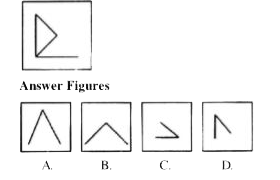
View Solution
Knowledge Check
Four students A, B, C and D selected the following items from the materials available in the science laboratory to perform an experiment to study the refraction of light through a glass slab :
(A) convex lens, glass slab, pins, drawing board, white paper, scale
(B) glass slab, pins, drawing board, scale, white paper, protractor
(C) glass slab, glass prism, candle, screen, pins, scale, drawing board, protractor
(D) concave mirror, pins, glass slab, protractor, white paper, drawing board
Correct choice of the items required is made by the student :AABBCCDDA student performs an experiment on photoelectric effect using two materials A and B. A plot of stopping potential (V0) vs freqency (v) is as shown in the figure.
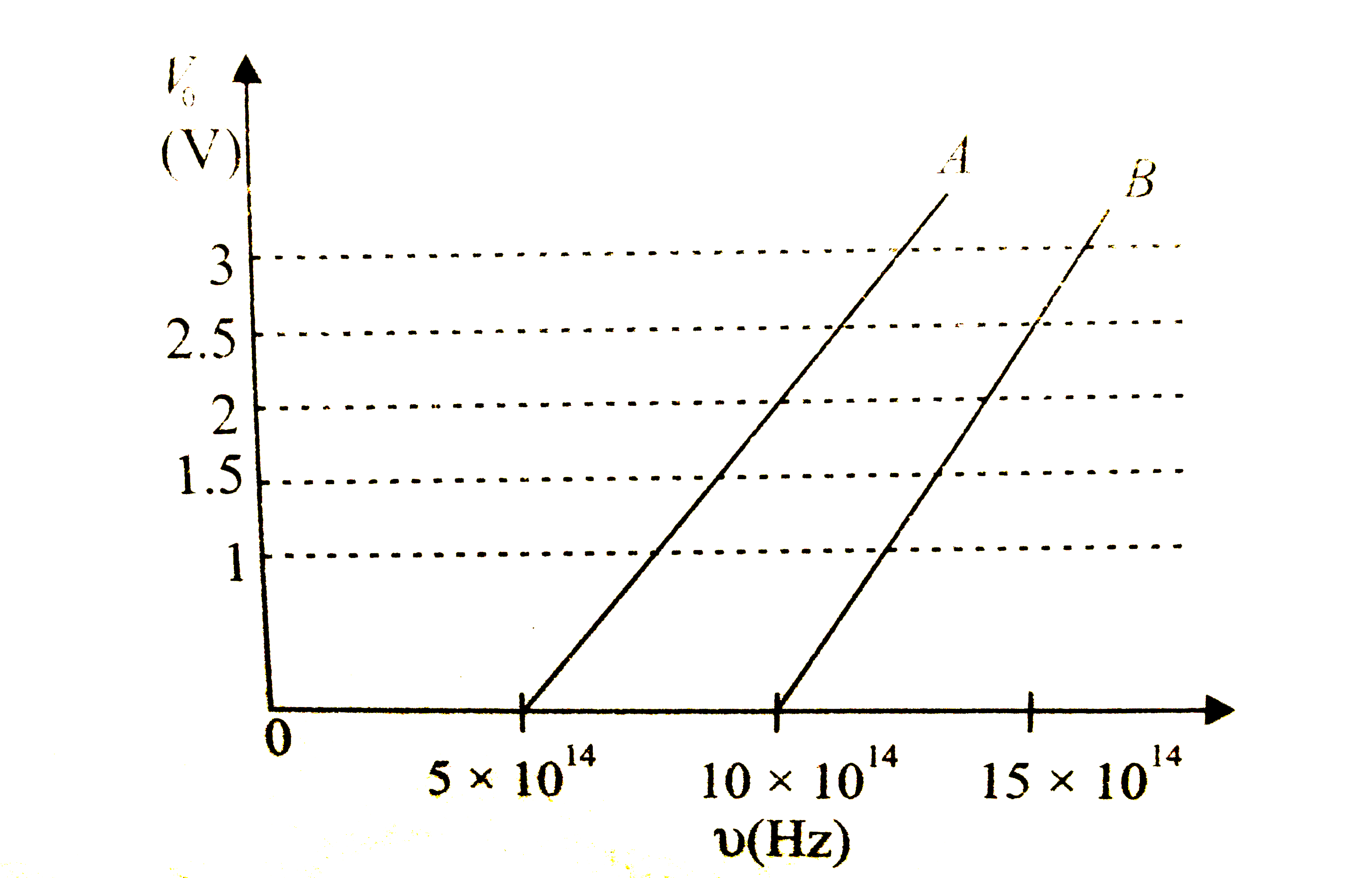
The value of h obtained from the experiment for both A and B respectively is
(Given electric charge of an electron =1.6×10−19C)A3.2×10−34Js,4×10−34JsB6.4×10−34Js,8×10−34JsC1.2×10−34Js,3.2×10−34JsD4.2×10−34Js,5×10−34JsA student performs an experiment on photoelectric effect using two materials A and B. A plot of stopping potential (V0) vs frequency (ν) is as shown in the figure.

The value of Planck's constant obtained from the experiment for both A and B respectively is
(Given electric charge of an electron =1.6×10−19C)A3.2×10−34Js,4×10−34JsB6.4×10−34Js,8×10−34JsC1.2×10−34Js,3.2×10−34JsD4.2×10−34Js,5×10−34Js
In these questions, there is a question figure, a part of which is missing. Observe the answer figures A, B, C, D and find out the answer figure which without changing the direction, fits in the missing part of the question figure in order to complete the pattern in the question figure. Indicate your answer to the question.
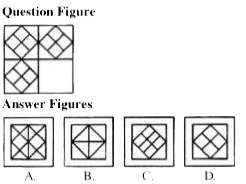
View SolutionIn these questions, there is a question figure, a part of which is missing. Observe the answer figures A, B, C, D and find out the answer figure which without changing the direction, fits in the missing part of the question figure in order to complete the pattern in the question figure. Indicate your answer to the question.

View SolutionIn these questions, there is a question figure, a part of which is missing. Observe the answer figures A, B, C, D and find out the answer figure which without changing the direction, fits in the missing part of the question figure in order to complete the pattern in the question figure. Indicate your answer to the question.
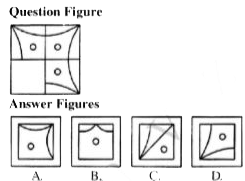
View SolutionIn these questions, there is a question figure, a part of which is missing. Observe the answer figures A, B, C, D and find out the answer figure which without changing the direction, fits in the missing part of the question figure in order to complete the pattern in the question figure. Indicate your answer to the question.
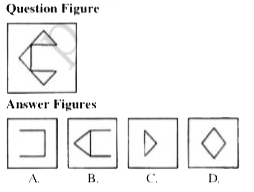
View SolutionIn these questions, there is a question figure, a part of which is missing. Observe the answer figures (A), (B), (C) and (D) and find out the answer figure which without changing the direction fits in the missing part of the question figure in order to complete the pattern in the question figure.

View Solution
